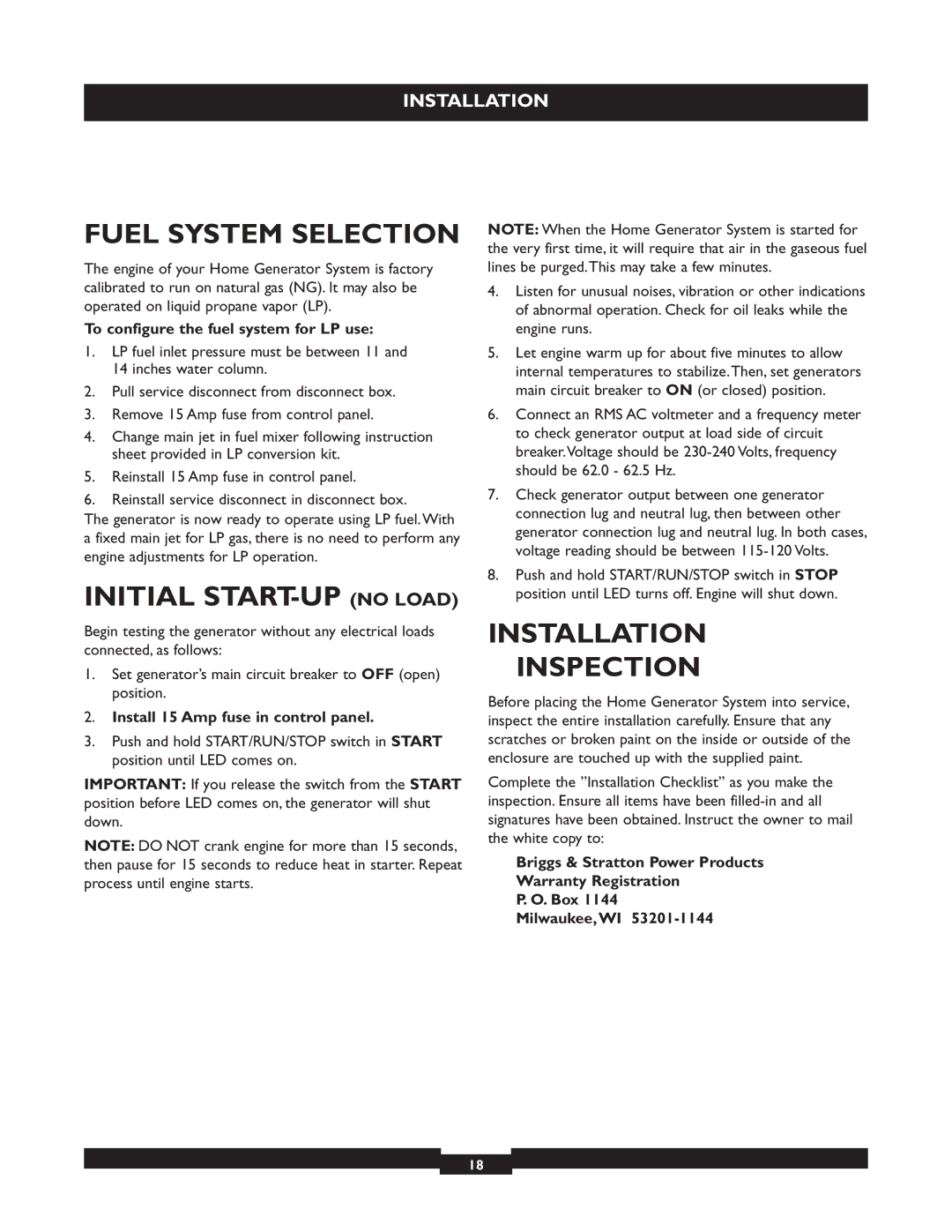40221 specifications
The Briggs & Stratton 40221 is a prominent model of portable generator that is well-regarded for its reliability, performance, and innovative features. Designed for both home and professional use, this generator stands out due to its robust construction and versatile applications, making it an excellent choice for homeowners, contractors, and outdoor enthusiasts alike.One of the main features of the Briggs & Stratton 40221 is its powerful 305cc engine, which delivers a notable output of 3,250 running watts and a peak wattage of 3,750 watts. This capacity ensures that it can effectively power essential appliances during outages or provide energy for tools and equipment on job sites. The generator’s ability to handle a variety of loads makes it suitable for a range of applications, from powering refrigerators and lights to operating power tools.
The Briggs & Stratton 40221 utilizes advanced inverter technology, which is designed to produce clean and stable power. This technology allows users to safely run sensitive electronics such as laptops and smartphones without the risk of damage. The inverter system also provides excellent fuel efficiency, meaning users can run the generator longer on a single tank of gas, enhancing convenience and cost-effectiveness.
Another key characteristic of the 40221 is its lightweight and portable design. Equipped with convenient folding handles and solid rubber wheels, it can be easily transported to job sites, campsites, or stored away during periods of non-use. The generator’s compact frame doesn’t compromise its durability; it is built to withstand outdoor conditions, thanks to its reinforced structure and weather-resistant design.
Safety features are a fundamental aspect of the Briggs & Stratton 40221. It comes with an Automatic Voltage Regulation (AVR) system that helps maintain consistent power output while protecting connected devices from voltage spikes. Additionally, it includes built-in circuit breakers to prevent overload and a low-oil shutdown feature, which stops the engine to avoid damage when oil levels get too low.
The Briggs & Stratton 40221 is equipped with multiple outlets, including 120V AC outlets and a 12V DC outlet for straightforward connectivity to various devices. With user-friendly controls and a clear display for monitoring fuel levels and runtime, this generator is designed for ease of use, appealing to both seasoned and novice users.
In summary, the Briggs & Stratton 40221 combines power, efficiency, portability, and durability into a single unit, making it a practical choice for anyone needing reliable backup power or on-the-go energy solutions. Whether for emergencies or everyday use, it delivers dependable performance that stands the test of time.

